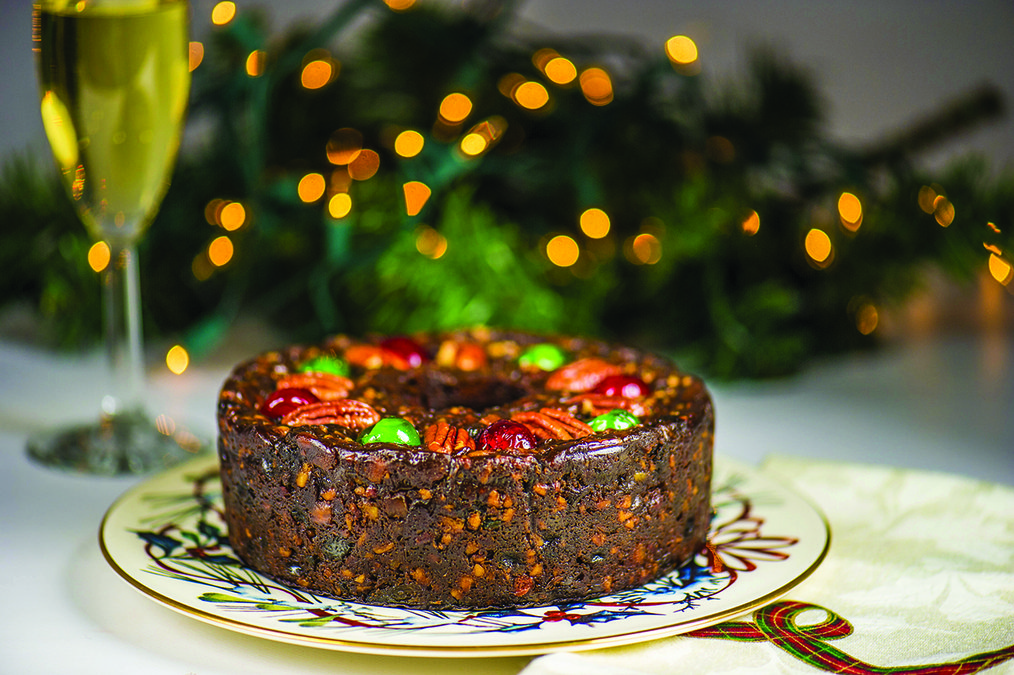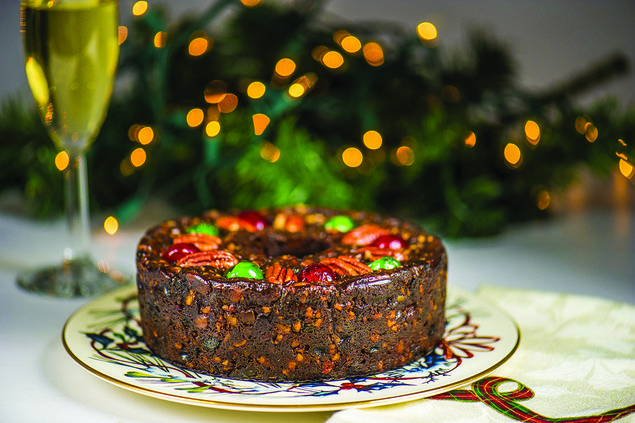Certain sights and sounds are ingrained in the holiday season, from twinkling lights to carols piping over retailers’ sound systems. Amid the shelves of holiday wares and delicacies, fruitcake makes its annual appearance.
Fruitcake, sometimes referred to as plum cake or Christmas cake, can be prepared in various ways. However, a dense bundt-type cake dotted with dried, candied fruit and often soaked in rum or brandy has become the standard. Loathed or loved, seldom anything in between, fruitcake is typically mocked as the ultimate regift. But just like Charlie Brown’s scant Christmas tree, which was initially mocked, it’s time to see fruitcake in a new light. Consider these fruitcake fun facts.
The texture of fruitcake can vary from cake-like to more of a sweet bread like brioche. Italians dig into panettone, Germans delight with stollen and Jamaicans serve black cake.
The first fruitcakes weren’t eaten. According to historians, fruitcakes were initially made by ancient Egyptians, who tucked the desserts into the tombs with their dead so a sweet treat could be enjoyed in the afterlife.
Fruitcake gained popularity as military rations, as everyone from Roman soldiers to Crusaders found fruitcake provided a diverse array of nutrients and an energy boost in battle. Fruitcake also stores well, which can be beneficial for military personnel in battle.
Fruitcake seemingly is indestructible. While it likely cannot last forever, Tastemade says if a fruitcake is kept in an airtight container and stored in a dark, cool place, it could be reheated years after being baked. Starch crystals and dried fruit in the cake will release stored water when warmed, rehydrating the cake.
Historical accounts indicate Romans were among the first people to eat fruitcake, which they might have enjoyed as early as 100 A.D. A version called “satura” was made by mixing stale bread with pine nuts, pomegranate seeds, raisins, and then soaking it in a barley mash and an alcoholic beverage brewed from honey.
Fruitcake became a popular dish to serve at British royals’ weddings. Queen Victoria, Princess Diana and Prince William served fruitcake at their receptions.
The Smithsonian Air and Space Museum in Washington, D.C. has a fruitcake on display. It traveled into space on Apollo 11 in 1969, but was never eaten.
Seth Greenberg, who worked in his family’s New York City bakery, attests that fruitcake is delicious when made with the right ingredients. The neon-colored, dry and overly sweet fruit that many bakers use is the problem with poor cakes. But proper ingredients like brandy, glace cherries, apricots, figs, and dates can make for a delicious fruitcake.
The average fruitcake weighs between two and three pounds. However, the heaviest fruitcake on record, according to “The Guinness Book of World Records,” came in at 9,596 pounds. Despite the hefty weight of this cake, it’s only around 92 to 160 calories per serving.
Regardless of its unfavorable reputation, fruitcake remains an unwavering holiday tradition.





